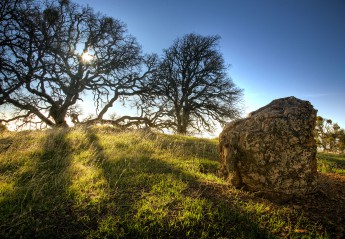Blythe, J. (2012). From passing-gesture to ‘true’ romance: Kin-based teasing in Murriny Patha conversation. Journal of Pragmatics, 44, 508-528. doi:10.1016/j.pragma.2011.11.005.
Just as interlocutors can manipulate physical objects for performing certain types of social action, they can also perform different social actions by manipulating symbolic objects. A kinship system can be thought of as an abstract collection of lexical mappings and associated cultural conventions. It is a sort of cognitive object that can be readily manipulated for special purposes. For example, the relationship between pairs of individuals can be momentarily re-construed in constructing jokes or teases. Murriny Patha speakers associate certain parts of the body with particular classes of kin. When a group of Murriny Patha women witness a cultural outsider performing a forearm-holding gesture that is characteristically associated with brothers-in-law, they re-associate the gesture to the husband–wife relationship, thus setting up an extended teasing episode. Many of these teases call on gestural resources. Although the teasing is at times repetitive, and the episode is only thinly populated with the telltale “off-record” markers that characterize teasing proposals as non-serious, the proposal is sufficiently far-fetched as to ensure that the teases come off as more bonding than biting.
Also, see Joe’s publications page for links to a number of other articles and his dissertation.
